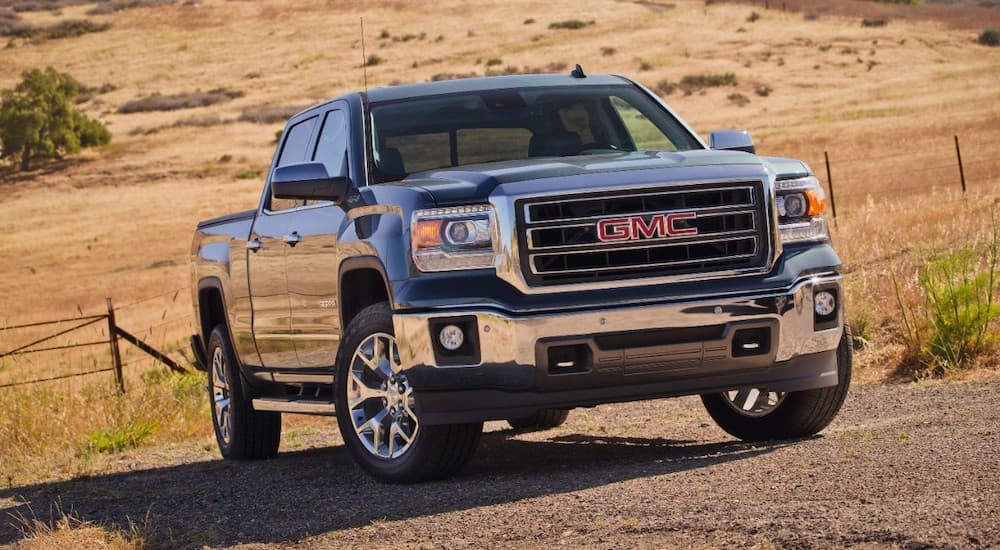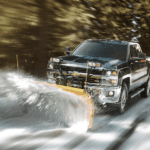Around here, we spend a lot of time talking about the decision to purchase a pre-owned vehicle (usually, praising people for recognizing the built-in value, while empowering themselves to enjoy a better return on their investment). We talk about getting more vehicle for less money, and the fact that you’re putting depreciation to work for you. We talk about the greater assurance provided by today’s engineering, as well as the increased visibility afforded by vehicle history reports. All in all, it just makes good sense. But do all those same thoughts apply to the purchase of used trucks?
It’s a fair question. From discussion of wear-and-tear to the greater demand of reliability, some of the arguments in favor of buying a pre-owned car, crossover, or SUV might go out the window when trucks become the focal point of the conversation.
But of course, many of them still apply. You can still enjoy the expanded selection of more model year offerings. You still have the opportunity to afford a higher-valued make, model, or trim level that may have previously been outside of your price range. You still have the assurance provided by the vehicle history report, to bolster the results of your own inspection. And of course, you’ll still enjoy (level of wear depending) a slowed rate of depreciation with the possibility of an extended lifespan.
So what should you keep in mind, in order to ensure your long-term satisfaction with the decision to purchase a pre-owned truck? Well, here’s our list…
Clearing the Assumptions
At this point, we’re assuming that you’ve established your budget and financing options. We assume that you’ve explored the options available to you, by perusing local dealer inventories. We assume that you’ve assessed the reputation of each of those dealerships with the intention of finding the best partner. We assume that you’ve narrowed your search a bit, and are now in the final stages of making your decision based on the review of vehicle histories, close-up inspections, and test drives. We assume that each of these options has modest mileage, implying the possibility of a longer lifespan yet to come. And with all that said, let’s get down to it.
Vehicle History
The accessibility of Vehicle History Reports is a luxury afforded to today’s buyers and one that has helped to reshape the industry as a whole. It allows a prospective buyer to research a vehicle’s ownership history, including any reported accidents or major repairs. But a truck, of course, offers a unique challenge because you’re likely to want more information such as (i) why is the truck being sold (ii) what is the maintenance history (iii) what sort of precedent has been set by its powertrain in terms of lifespan and/or possible issues. Of course, one might argue that the same concerns apply to any vehicle, but the kind of demands that one puts on a truck make such information all the more valuable.
That said, answers might differ slightly depending on whether you’re purchasing from a dealership or as part of a private sale from the previous owner, as well as depending on how reputable either is.
If there is no indication of accidents or major repairs on the vehicle history report, don’t embrace it as a guarantee of a trouble-free existence. While a valuable assurance, it might simply mean that incidents weren’t reported. We talk a lot about performing one’s due diligence, and here’s a great example of where that starts. By familiarizing yourself with the vehicle, and being able to identify any mismatched or aftermarket components, you can determine unreported repair and/or replacement. This may not be the sign of an accident (as it could simply be a modification performed by the previous owner), but it is the sort of thing that should be questioned.
A reputable private seller, of course, will be more helpful in this regard. Someone who takes pride in maintaining their vehicles will be ready, willing, and able to account for such modifications and preventative maintenance. That said, trust your instincts. If something doesn’t feel right, it might not be. Don’t hesitate to ask questions and research a truck to the best of your ability. A willingness to do so is especially important if you plan to put that truck to serious work.
But if you haven’t already done a deep dive on the make, model, trim level, engine, and transmission to identify any red flags — it’s time that you do so. There are a wide range of consumer resources that can help to educate you on the nuances and reported experiences of others with the same trucks and/or powertrains. That kind of information is invaluable, and you’d be a fool not to put it to use.
Does it Fit Your Lifestyle
As mentioned above, we’re making certain assumptions in this article. One of those is whether or not a particular truck’s powertrain and performance ratings fit your needs. From the discussion of horsepower and torque rating to payload and towing capacity, it’s all-too-easy for an uninformed person to get stuck with a less-or-more truck than they need. An understanding of how you intend to drive (and challenge) that truck, is an important part of qualifying (or disqualifying) anyone you might be considering. In other words, dive deep.
Performing an Inspection
As with any vehicle purchase, it’s important to thoroughly inspect the vehicle. In the event that you lack the automotive skillset to perform such an inspection with confidence, enlist the help of a trusted person who can step in and do it for you. A physical inspection is key.
It begins with a walk-around. Simple, right? Not if you’re not sure what to look for. And considering the rigorous demands one puts on a truck, it’s important that you do. First, comes the identification of any body damage, or rust. Normally, this is considered the first sign of how well the previous owner maintained their vehicle and a primary indicator as to the duration of its remaining lifespan. Structural rust, be in the doorframe or around the base of the body panels could be reason for concern. And a closer look is imperative, as raised areas might indicate that existing rust spots have been concealed. Body damage falls into the same category since any dents or dings could be indicative of poor maintenance, a lack of willingness to execute repairs, and the possibility of other unseen issues that could render the truck less dependable.
And while one expects a truck bed to endure some degree of wear-and-tear, keep in mind that such expectations have been minimized with the ever-increasing prevalence of bed liners and bed covers. Damages, dents, and scratches can be a clear indication of diminishing integrity and an invitation to rusting. This would, of course, minimize a truck’s hauling reliability. Don’t set yourself up for a truck that’s not ready to work.
Tire Inspection
Once again, another example of a common-sense inspection that often gets overlooked. But remember, tires are expensive – and truck tires far more than car tires. If the tread depth or integrity is lacking, your new truck purchase just became a lot more expense since you might need to replace those tires in the immediate future.
Know When to Walk Away
A big part of any successful car buying experience comes from the confidence of a well-informed buyer. If you’ve performed your due diligence, researched your options, and performed a thorough inspection, you should be able to identify any areas of concern. As mentioned, it’s imperative that you trust your instincts — and if something seems ‘too good to be true’ don’t be afraid to walk away. Whatever truck you buy, will inevitably have work to do. Make sure that it’s the right truck for the job.





